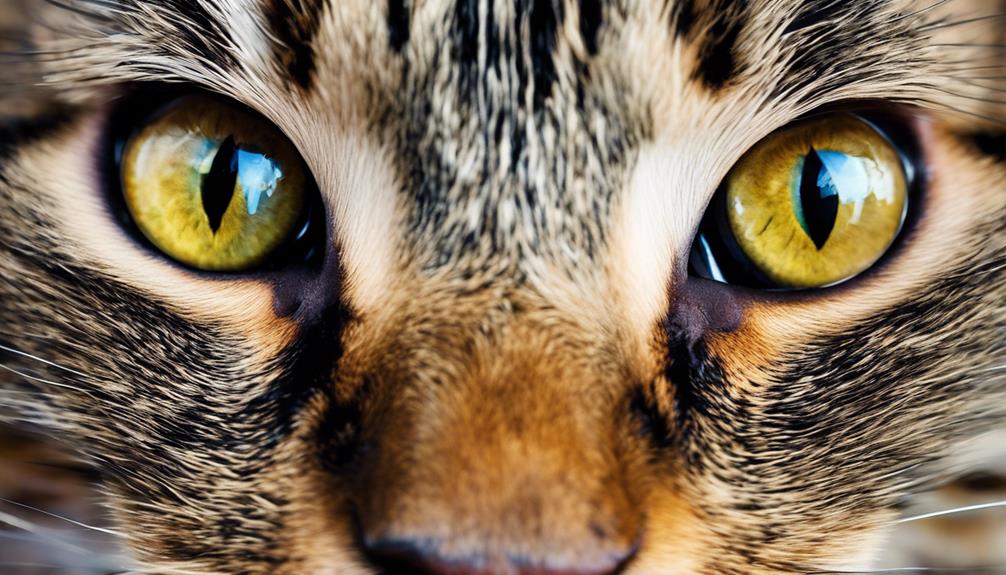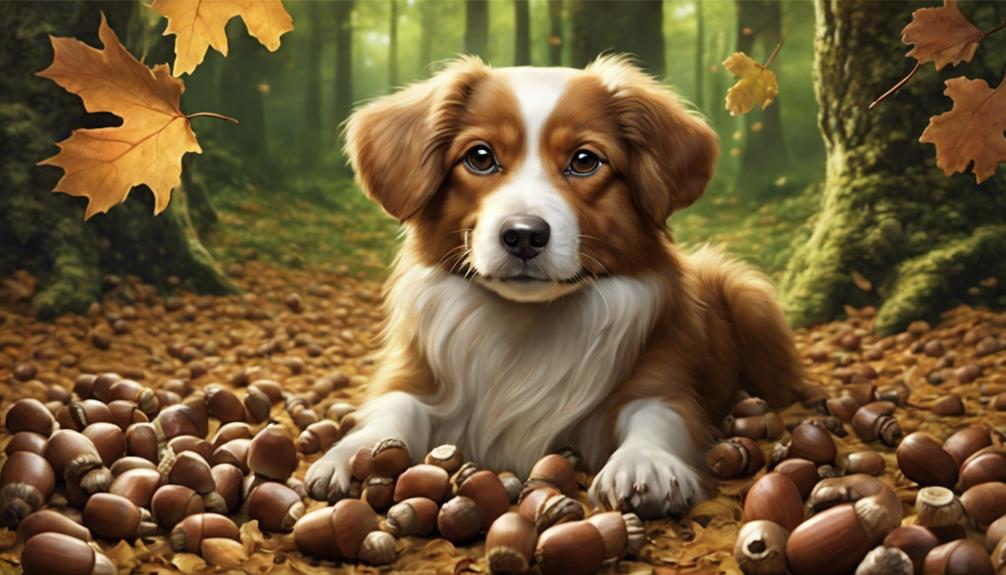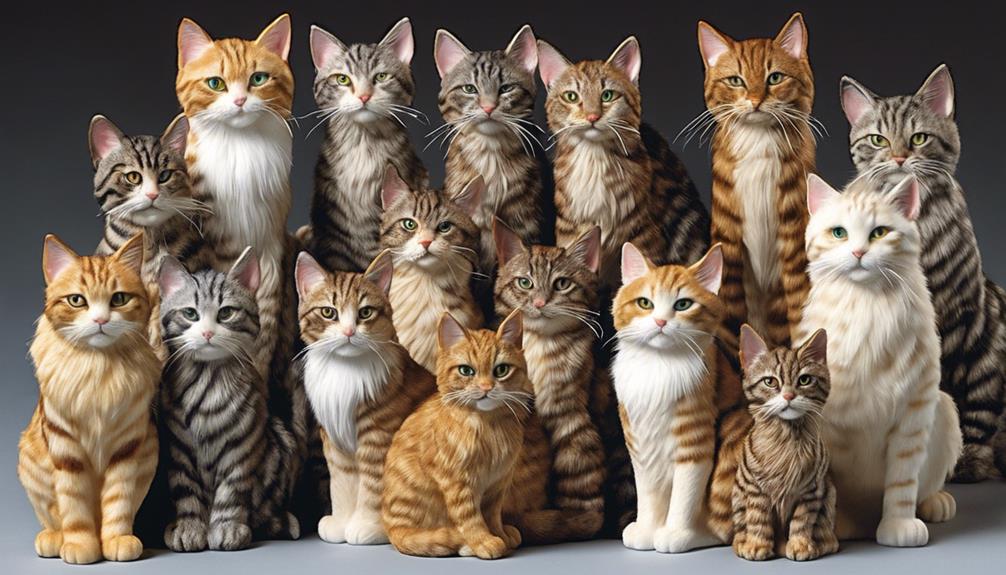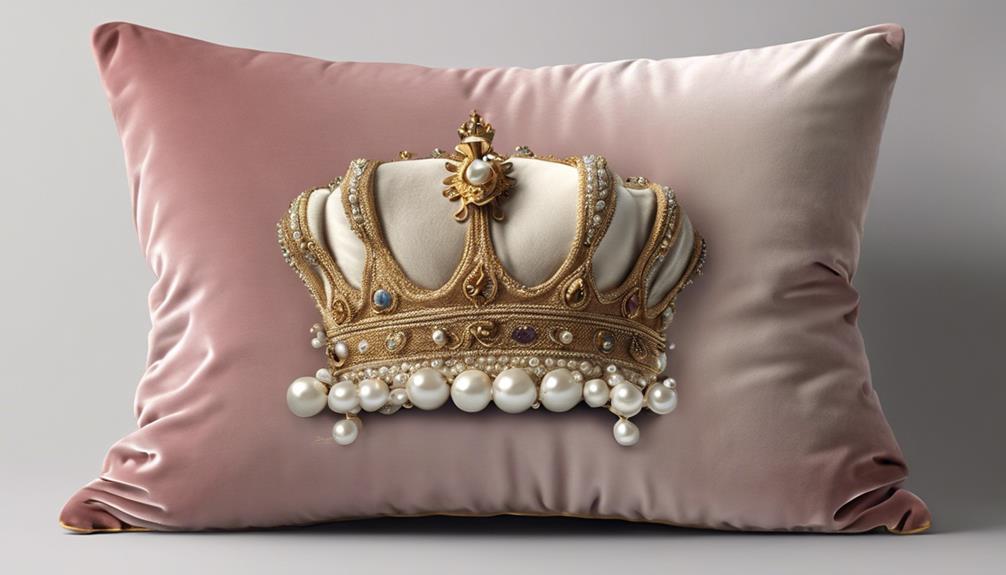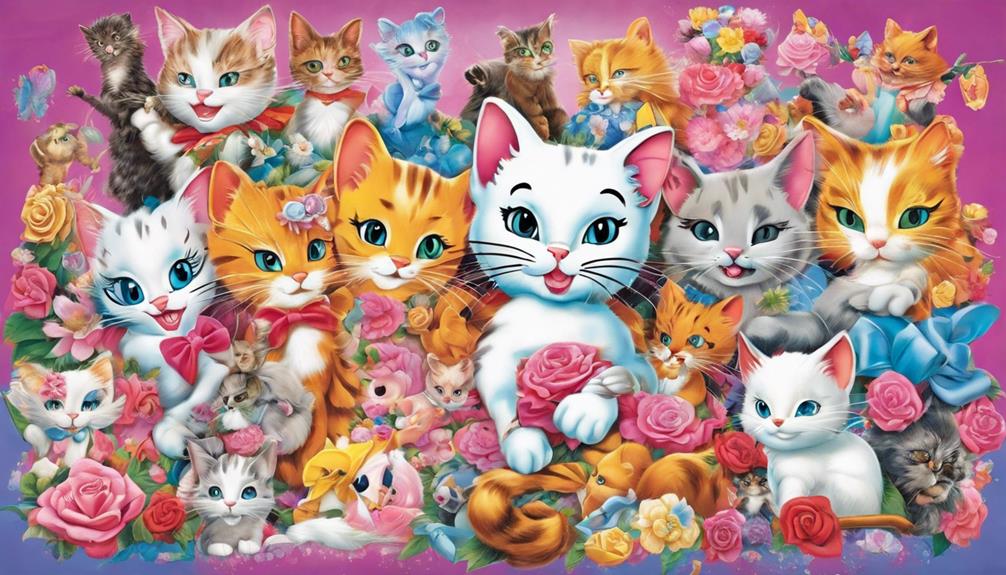When your cat stares at you with big pupils, it's likely expressing intense emotions like excitement, surprise, fear, or even affection. Those dilated eyes can signal curiosity or heightened interest in their surroundings. Sometimes, it's a way of showing a deep emotional bond with you. However, prolonged staring could indicate fear or stress. Understanding these subtle cues can strengthen your connection with your feline friend. But there's more to discover about your cat's staring behavior beyond just emotions.
Key Takeaways
- Big pupils signal intense emotions like excitement, fear, or curiosity.
- Cat staring with dilated eyes shows heightened interest or alertness.
- Understanding cat body language is crucial for interpreting their emotions.
- Dilated pupils may hint at underlying medical issues.
- Eye contact and pupil size reveal feelings, intentions, and emotional well-being.
Reasons for Cat Staring Behavior
When observing a cat staring at you with big pupils, it's crucial to understand the reasons behind this behavior. Cats communicate a lot through their body language, and dilated pupils can signal various emotions such as excitement, surprise, or fear.
Imagine those big, round eyes fixed on you – it could mean your feline friend is highly stimulated or experiencing intense emotions. In some cases, dilated pupils indicate that your cat is alert and focused on something specific.
However, it's essential to note that dilated pupils might also be a sign of an underlying medical issue. While most often, big pupils are harmless and related to emotional states, sometimes they can hint at health concerns that need attention. So, it's always wise to observe your cat's behavior holistically, considering the context and other signs they might be displaying. Understanding your cat's body language can deepen your bond and ensure their well-being.
Curiosity and Cat Staring
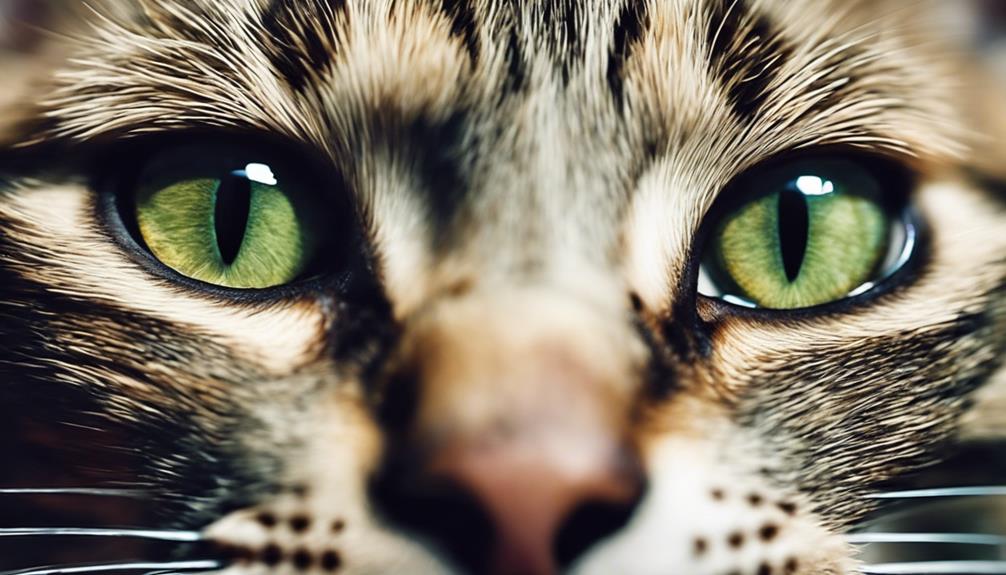
When our feline friends fix their gaze on us with those big pupils, it's their curiosity piqued.
Their intense focus and dilated eyes indicate a deep interest in what we're up to.
Cats' investigative nature shines through as they stare, absorbing all the details of their surroundings.
Curiosity in Cat Behavior
Exploring their surroundings with intense curiosity, cats often express their interest through focused staring with big pupils. Curiosity is a driving force behind a cat's behavior, pushing them to observe, learn, and engage with their environment.
When your feline friend locks eyes with you, their dilated pupils show heightened interest in what you're doing or saying. Cats rely on their keen vision and enlarged pupils to investigate new or intriguing stimuli in their surroundings.
This behavior of staring with big pupils is a common sight in curious cats as they explore and interact with the world around them. So, the next time your cat fixes you with a gaze, know that their curiosity is piqued, and they're fully engaged in understanding their surroundings.
Meaning Behind Staring
As cats stare at you with big pupils, their intense curiosity drives them to explore and understand their environment deeply. When your cat locks eyes with you, their dilated pupils show heightened interest and surprise.
This staring behavior isn't mere observation; it's a window into their excitement and anticipation. The way your cat's eyes widen indicates a genuine engagement, with their whole body focused on decoding the world around them.
Affection and Cat Staring
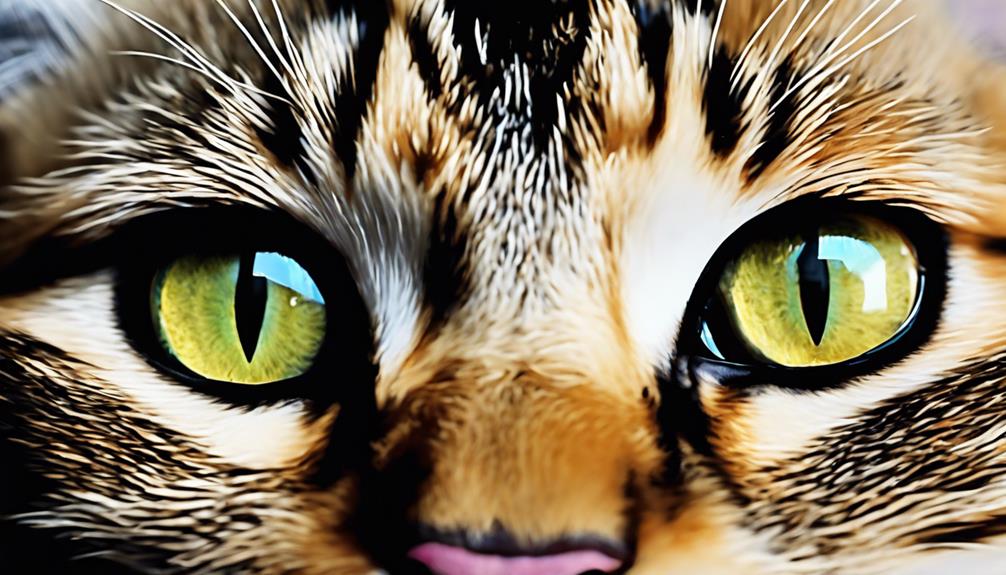
Expressing their affection, cats often show slow blinks while staring at their owners, a behavior that signifies love and trust in feline communication. This loving gesture can create a strong bond between a cat and its human companion.
Here are some insights into why cats exhibit such behaviors:
- Sign of Affection: Slow blinking is a clear sign that your cat feels comfortable and safe around you. It's their way of saying, 'I trust you.'
- Deep Eye Contact: When a cat maintains deep eye contact with you, it shows a level of intimacy and connection. They're trying to communicate their feelings in a non-verbal way.
- Cat Stares: Cats staring at you with big pupils can be a display of affection. The dilated pupils indicate excitement and positive emotions towards you.
- Building Trust: Through these actions, cats aim to build a strong emotional bond with their owners. Responding in kind can strengthen the relationship and enhance mutual understanding.
Understanding these behaviors can help you reciprocate your cat's affection and strengthen your bond with them.
Dominance and Cat Staring
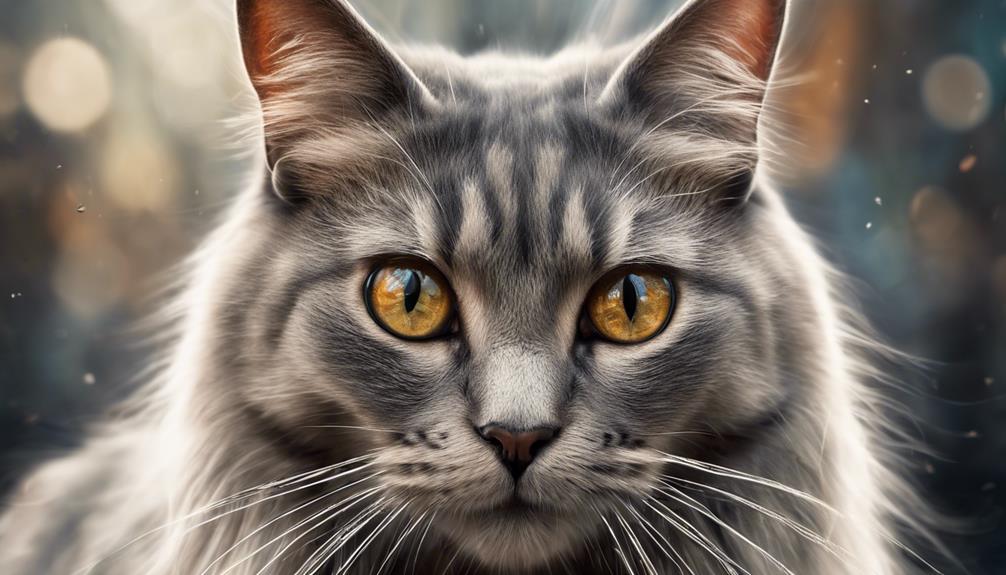
In the world of feline social dynamics, cat staring serves as a powerful tool for establishing dominance and hierarchy among cats. Dominant cats often engage in intense eye contact, using staring as a form of communication to assert their position in the group. This behavior is crucial for reflecting the complex hierarchy and dynamics within a cat community. When a dominant cat stares down its opponent, it sends a clear message of superiority and control.
On the flip side, submissive cats tend to avoid direct eye contact with dominant cats as a sign of respect and submission. This subtle form of communication helps maintain peace and order within the group. By understanding the significance of eye contact and staring in cat behavior, we can gain insights into the relationships and interactions among these fascinating creatures.
Cat Staring Out of Fear
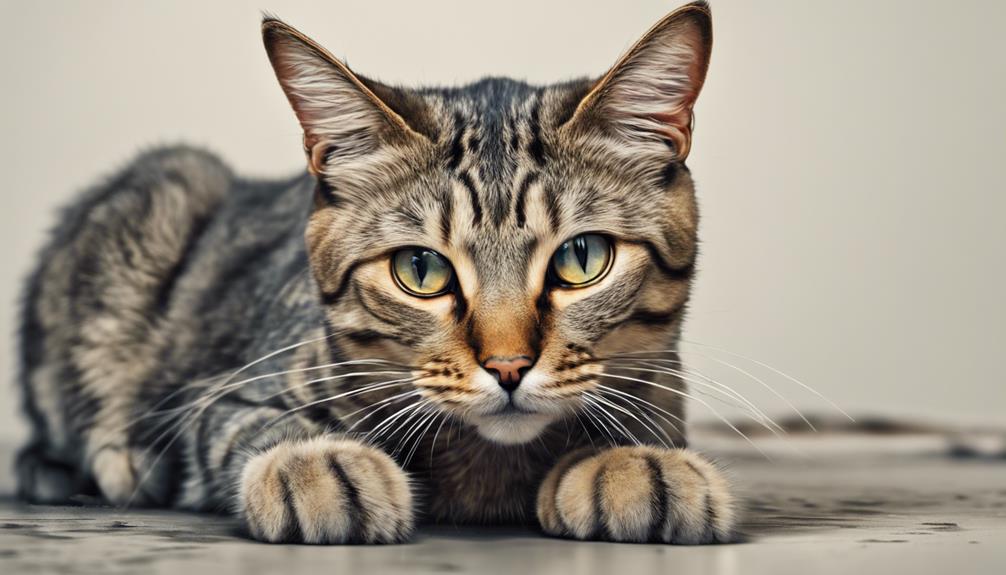
When our feline friends stare at us with big, dilated pupils, it might be a sign of fear or anxiety.
This fear-induced staring can be triggered by various factors like loud noises or unfamiliar surroundings.
Understanding these defensive postures and fearful body language cues helps us provide comfort and security to our cats in distress.
Fearful Body Language
Observing a cat with big pupils can provide valuable insights into its emotional state, particularly when it exhibits fearful body language. When a feline is feeling threatened or anxious, its body language can reveal its inner turmoil. Here are some signs to look out for:
- Dilated Pupils: Enlarged pupils can indicate heightened fear or stress in your cat.
- Flattened Ears: Ears pressed flat against the head signal discomfort or fear.
- Tense Body Posture: A rigid or tense body indicates a cat on edge.
- Avoidance Behavior: Cats may avoid eye contact, hide, or show signs of nervousness when fearful.
Understanding these cues helps in addressing and soothing your cat's anxiety, creating a safe and secure environment for your furry friend.
Defensive Postures Explained
Understanding a cat's defensive postures, like staring with big pupils, reveals its underlying fear or anxiety. When a cat displays dilated pupils while staring, it signifies heightened arousal and readiness for defensive actions.
Defensive postures can also include flattened ears, raised fur, and a tense body stance. These behaviors are often triggered when a cat feels threatened or unsafe in its environment.
Recognizing these defensive signals is crucial in responding appropriately to alleviate the cat's fear or anxiety. By understanding the signs of defensive postures, such as dilated pupils and tense body language, we can create a more secure and comforting environment for our feline companions.
Interpretation of Cat Staring
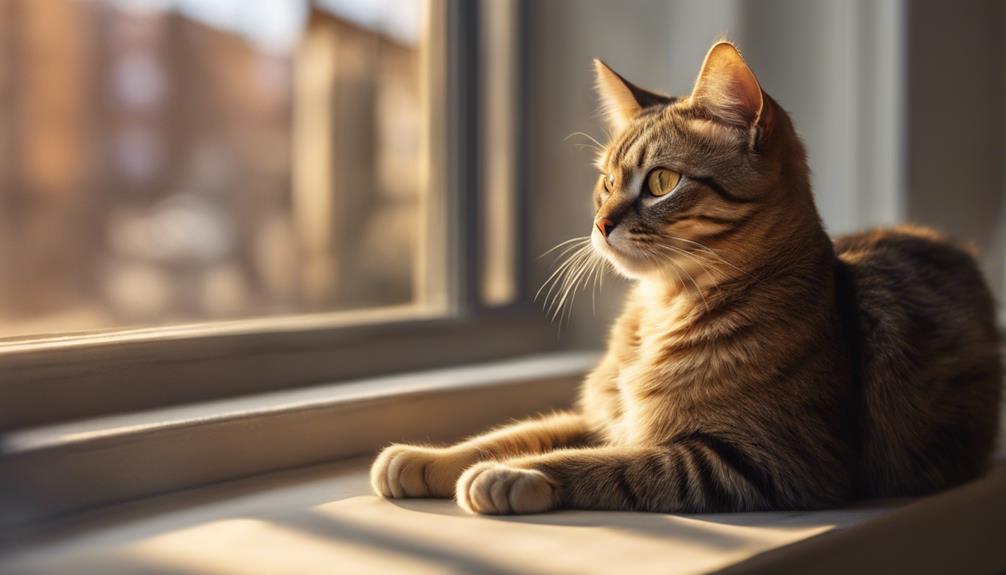
What do a cat's staring eyes reveal about their emotions and intentions? When deciphering the meaning behind a cat's intense gaze, it's essential to consider various factors that can shed light on their mood and intentions. Here's what you need to know:
- Dilated Pupils: Dilated pupils in cats often indicate excitement, surprise, or fear. Fully dilated pupils may suggest heightened arousal, so it's crucial to assess the overall body language of the cat to interpret the context accurately.
- Constricted Pupils: On the other hand, constricted pupils can signal agitation or anger in cats. If a cat with big, round eyes and pinprick pupils is staring at you, it might be a sign of potential aggression, indicating readiness to attack.
- Squinted Eyes: Cats that squint or half-close their eyes are displaying signs of affection, relaxation, and trust. This relaxed gaze resembles a sense of comfort and security, indicating positive emotions towards you.
- Eye Contact and Blinking: Establishing trust and connection with a cat can be achieved through eye contact and blinking. Blinking at a cat can convey trust and connection, with mutual blinking fostering a bond of trust and positive interaction. So, if your cat is staring at you, consider blinking back to communicate feelings of trust and affection.
Cat Staring and Communication

Cat staring serves as a nonverbal form of communication between felines and humans, conveying a range of emotions and intentions. When your cat locks eyes with you, they are trying to tell you something beyond words. Understanding this form of communication can deepen the bond between you and your furry friend. Let's delve into the significance of cat staring and how it plays a crucial role in their interactions with us.
| Emotion/Intention | Significance |
|---|---|
| Excitement | Dilated pupils may indicate your cat's enthusiasm or anticipation. |
| Fear | Big pupils while staring could mean your cat is feeling scared or anxious. |
| Curiosity | A focused gaze with dilated pupils might show your cat's interest in something. |
Cats use staring as a tool to express themselves, so pay attention to their eye signals to better understand their mood and needs. Next time your cat fixes their gaze on you with big pupils, remember, it's their way of communicating with you.
When Cat Staring Raises Concerns
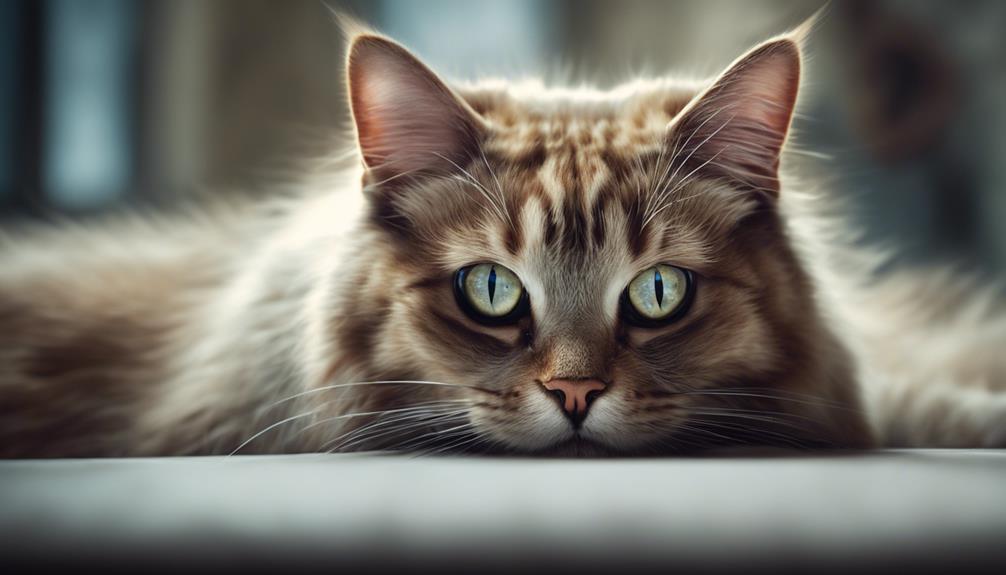
When observing a cat's prolonged and intense staring with dilated pupils, it can raise concerns about their emotional state or well-being. Here are some key points to consider:
- Interpreting Emotional State: Dilated pupils in cats can indicate a range of emotions such as excitement, surprise, or fear. Understanding these cues can help decipher what your cat might be feeling.
- Readiness to React: Big, round eyes with dilated pupils may signal that a cat is on high alert and ready to respond to a situation. It's essential to pay attention to other body language cues to grasp the full picture.
- Monitoring Changes: Keeping an eye on changes in pupil size can offer valuable insights into your cat's emotional well-being. Consistent monitoring can help in detecting any unusual behavior early on.
- Overall Body Language: Dilated pupils, when combined with other body language cues, provide a holistic view of your cat's feelings and intentions. Being mindful of these signals can help strengthen the bond between you and your feline companion.
Managing Cat Staring Behavior
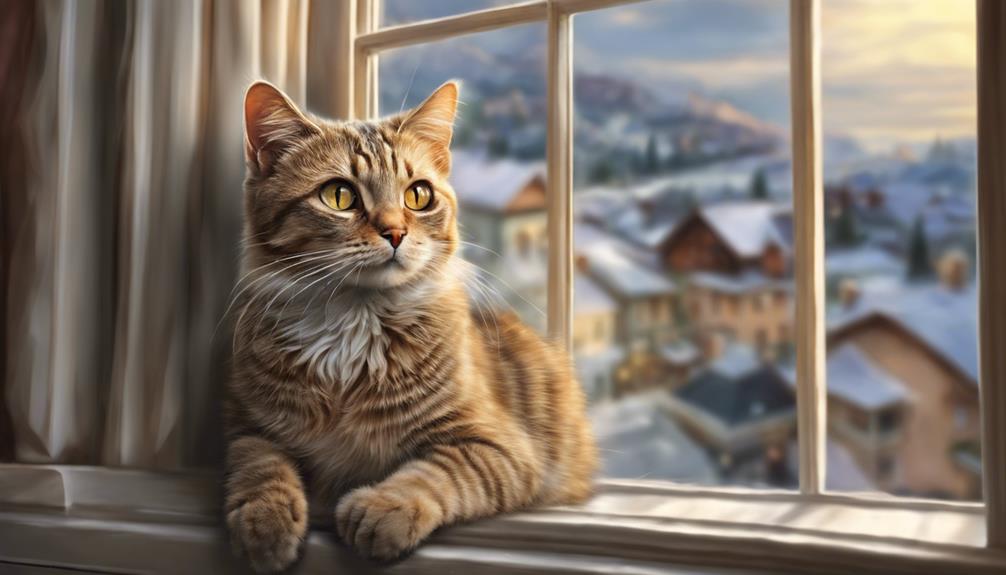
When managing cat staring behavior, we can focus on techniques like eye contact training and redirecting attention positively.
By engaging in these practices, we can help our feline friends understand appropriate social cues and foster a strong bond.
Being attentive to their body language and reactions can provide valuable insights into their emotions.
Eye Contact Training
During eye contact training sessions, we gradually increase the duration of our gaze to help our feline companions get accustomed to staring without feeling threatened.
Start with short eye contact sessions and gradually extend the time.
Use positive reinforcement like treats and gentle praise to encourage your cat.
Monitor your cat's body language for signs of stress or discomfort.
Seek professional guidance if your cat continues to exhibit intense staring behavior despite training efforts.
Redirecting Attention Positively
To effectively manage cat staring behavior, redirecting attention positively through engaging interactive play sessions and providing stimulating toys is key. When your cat starts staring, try initiating a fun play session with their favorite toy or introducing a new interactive game to shift their focus.
Cats are naturally curious and playful creatures, so engaging their minds and bodies can help break the staring habit. Stimulating toys like puzzle feeders or treat-dispensing toys can also provide mental enrichment, reducing excessive staring tendencies.
Establishing a structured routine with regular playtime and interactive engagement can further discourage unwanted staring behaviors. By redirecting your cat's attention in a positive and engaging way, you can help minimize their fixation on staring.
Cat Staring: Normal or Not?
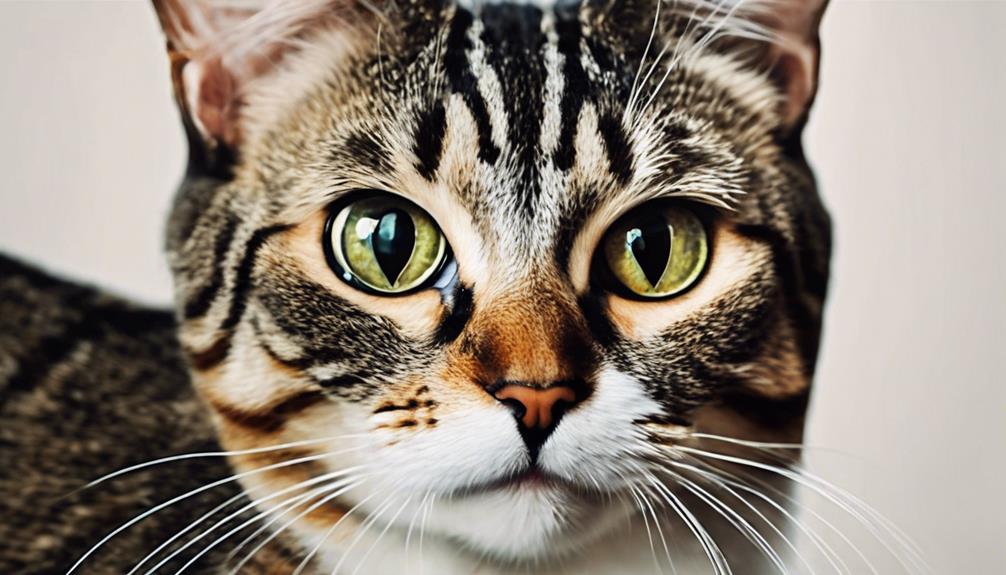
Staring intensely at you with big pupils, a cat's gaze can convey a range of emotions and intentions. When wondering if your feline friend's prolonged stare is normal behavior, consider the following:
- Emotional State: Cats staring with dilated pupils may be experiencing heightened emotions like excitement, surprise, or fear.
- Intentions: The dilation of a cat's pupils can indicate intense focus or strong emotions, depending on the context.
- Variability: Pupil dilation in cats can vary based on their mood, environment, or external stimuli.
- Interpretation: Understanding cat eye dilation is crucial in interpreting their emotional state and intentions accurately.
Cats communicate in various ways, and their eyes play a significant role in expressing feelings and thoughts. Observing their behavior, including staring with big pupils, can provide insights into their current state of mind. So, next time your cat fixes you with a penetrating gaze, remember that it's their way of sharing their emotions and intentions with you.
Frequently Asked Questions
Why Is My Cat Staring at Me With Big Eyes?
We notice our cat's big eyes staring. Those dilated pupils could reveal excitement, fear, focus, or readiness for action. When cats gaze at us intensely, they might be sharing their heightened emotions or alertness.
Why Do Cats Stare at You With Dilated Eyes?
We notice when cats stare with dilated eyes, they might feel excited, fearful, or ready to defend. Their large pupils show heightened emotions or arousal. Reading these signs helps us understand their feelings better.
Do Cats Pupils Dilate When Happy?
When we're happy, our cat's pupils may dilate from excitement or arousal, like a mirror reflecting our joy. Their eyes reveal a tale of emotions, a silent language understood by those who share a deep bond with feline friends.
What Does the Size of a Cat's Pupils Mean?
The size of a cat's pupils can indicate their emotional state. Dilated pupils may signal excitement, surprise, or fear. Monitoring changes in pupil size helps us understand our feline friends better and respond to their needs effectively.
Conclusion
In conclusion, your cat staring at you with big pupils can be attributed to various reasons such as curiosity, affection, dominance, fear, or communication. It's important to pay attention to your cat's body language and behavior to understand their intentions better.
If you have concerns about your cat's staring behavior, consult with a veterinarian or animal behaviorist for guidance. Remember, cat staring is a normal behavior, but it's essential to monitor it for any underlying issues.
